Have you ever been in a situation where you had to manually send WhatsApp messages to multiple JotForm respondents and wished for an automated solution?
In this post, we will discuss the method to automatically send WhatsApp messages to JotForm respondents.
We will capture the responses from JotForm on each form submission, establish a connection with Whatsapp Business Cloud API, and send JotForm respondents a personalized message on WhatsApp using Pabbly Connect. And the best part is this whole process requires only a one-time setup.
Steps to send WhatsApp messages on JotForm submissions automatically
1. Sign In / Sign Up to Pabbly Connect and Create a Workflow
2. Establish a link between JotForm and Pabbly Connect
3. Setup WhatsApp Business Cloud API as Action App
4. Create a Message Template
5. Map the Recipient Mobile Number and Body Fields
Step 1:- Sign In / Sign Up to Pabbly Connect and Create a Workflow
A. Sign In / Sign Up
To begin this process, visit Pabbly Connect and create your account by clicking on the ‘Sign Up Free’ button. You can also click on Sign In if you already have an account.
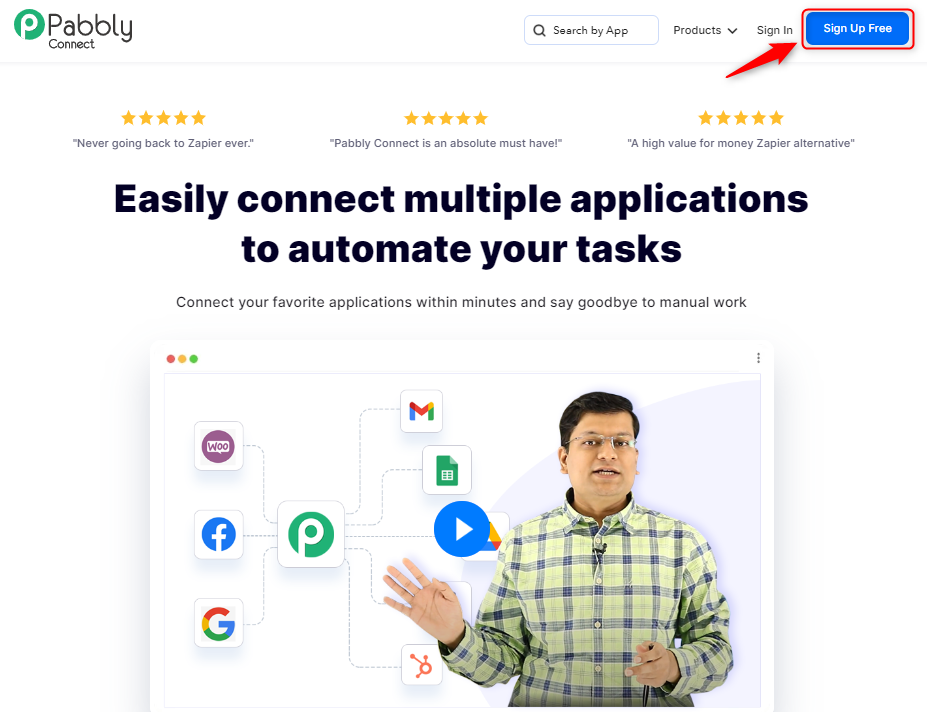
Click on the Pabbly Connect ‘Access Now’ button
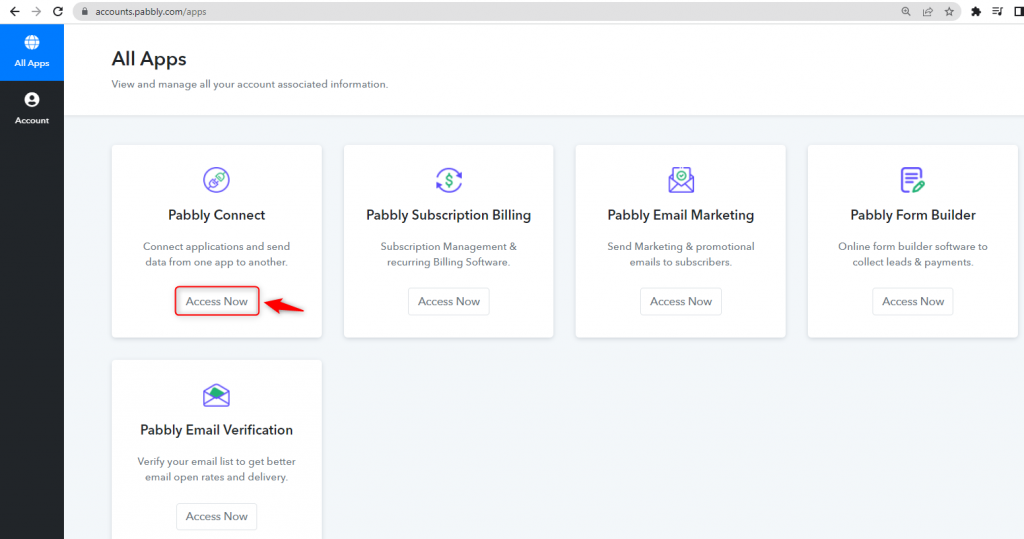
B. Create Workflow
To create a new workflow, click the ‘Create Workflow’ button.
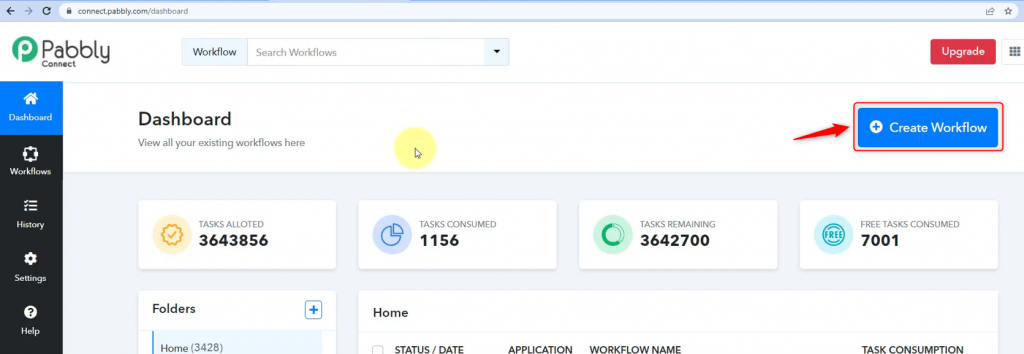
Name your workflow, and click on ‘Create’.
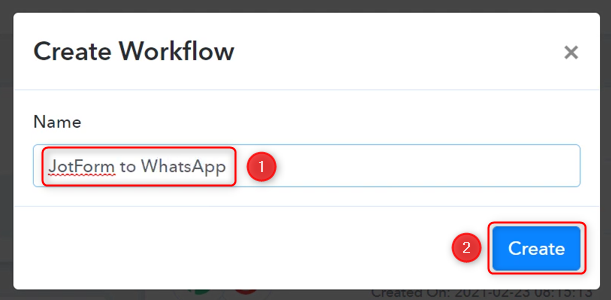
Step 2:- Establish a link between JotForm and Pabbly Connect
We will now look at the steps through which we will establish a link between JotForm and Pabbly Connect. This will help us fetch the JotForm respondent details on every new submission.
A. Trigger App
Trigger allows us to choose the application that will receive the data for Pabbly Connect. In our case, it would be Jot Form.
Expand the trigger step, choose ‘JotForm’ as the trigger app, and select ‘New Response’ as your trigger event. Click on ‘Connect’. This will generate a Webhook URL, that will serve as a link between JotForm and Pabbly Connect.
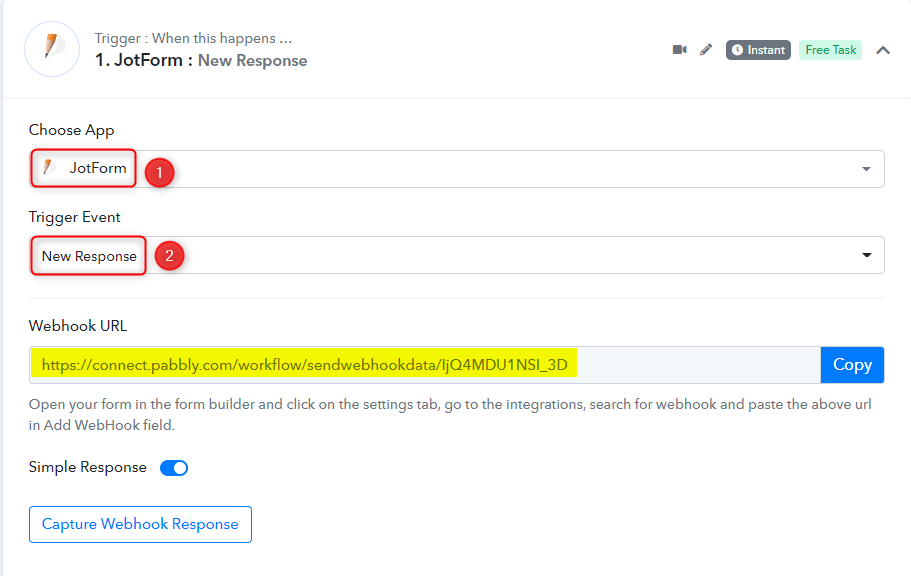
Copy the Webhook URL. Click the ‘Capture Webhook’ button, and as soon as you do that, Pabbly Connect will start to look for a response from the app we are trying to link it with.

B. Link JotForm
Go to the JotForm whose responses you want to link with WhatsApp, and click on ‘Edit Form’

Make sure the contact number in your form is in this format 91XXXXXXXXXX
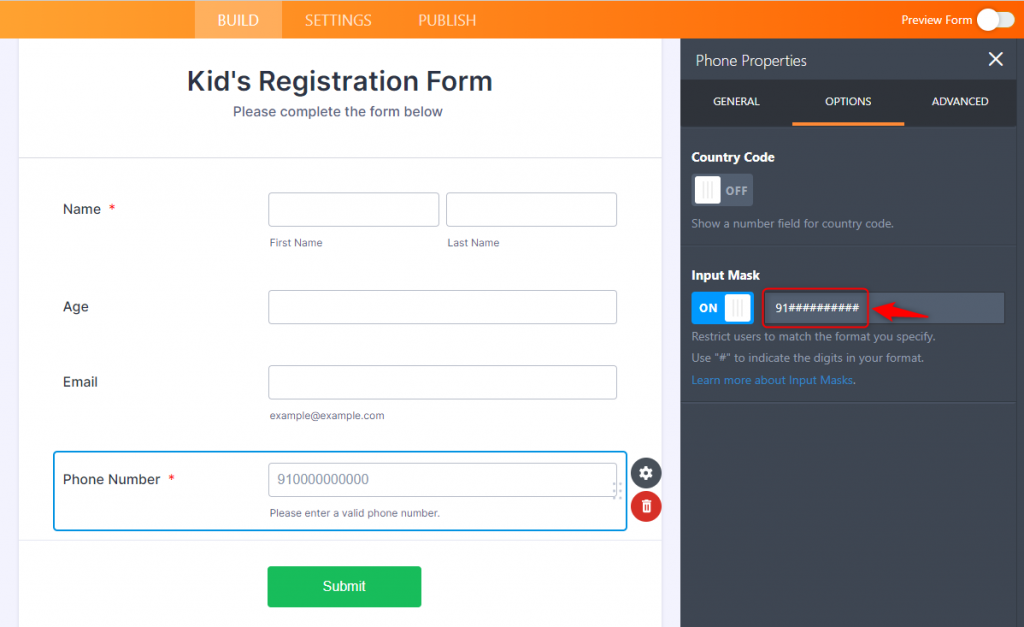
Click on ‘Settings’, and select ‘Integrations’
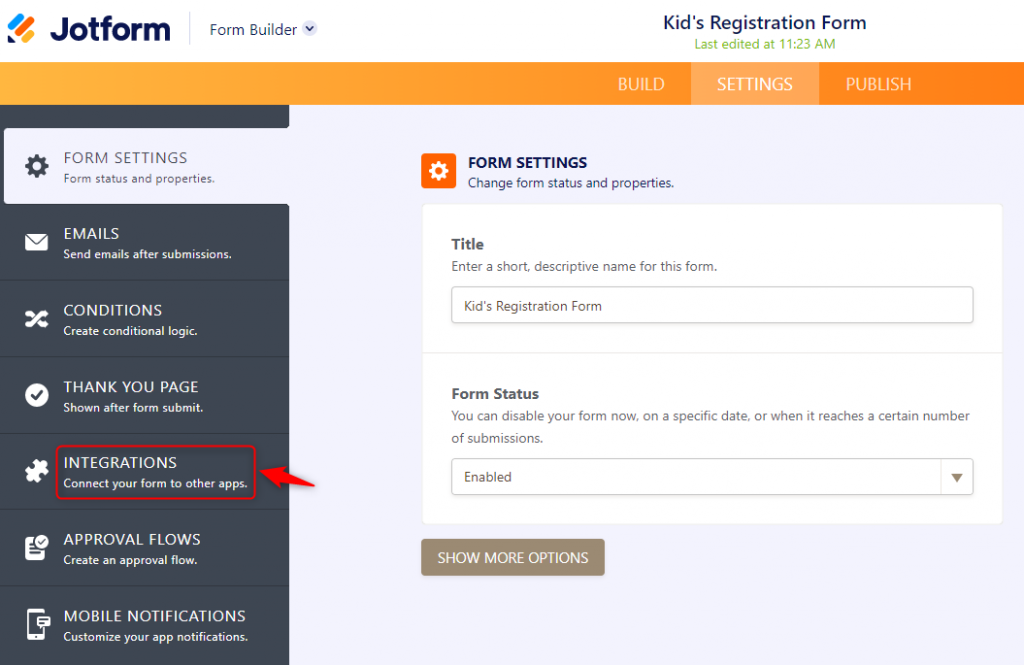
Search for and click on ‘WebHooks’
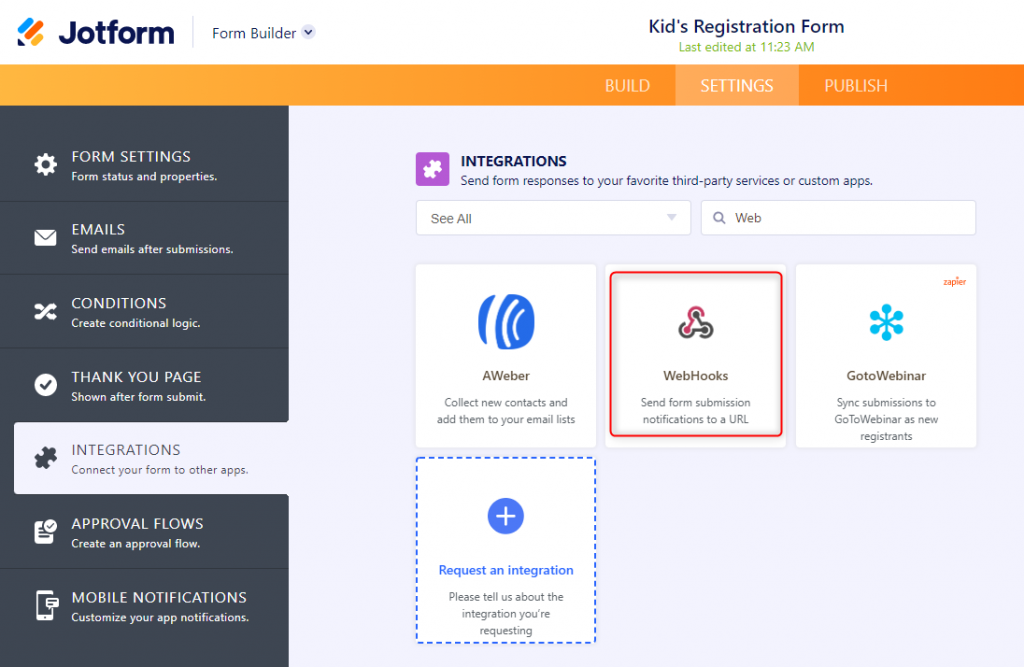
Paste the Webhook URL we copied earlier, and click on ‘Complete Integration’
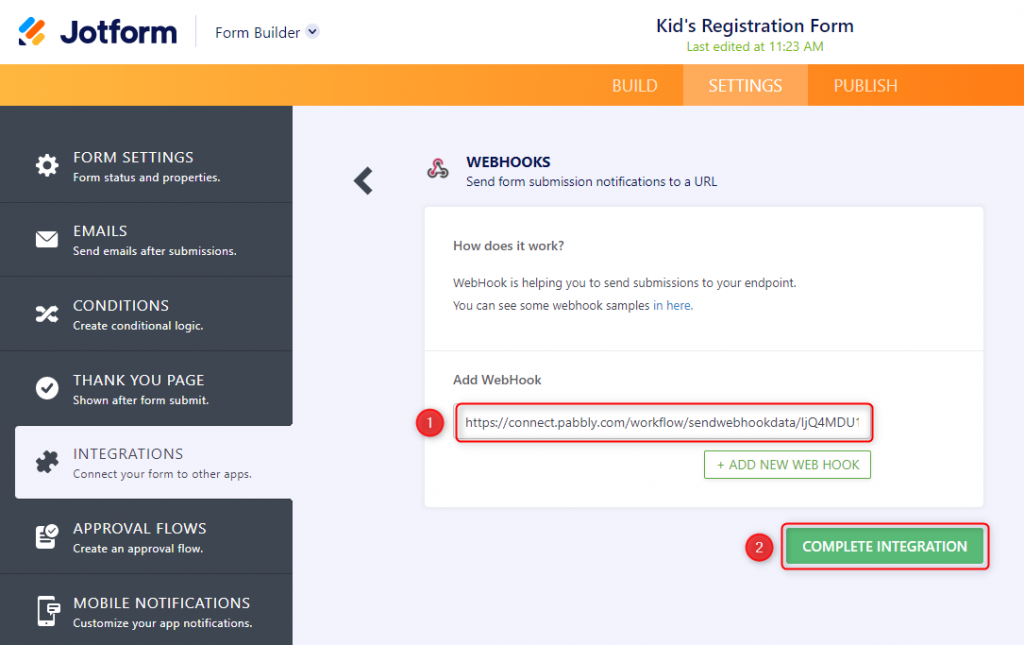
We have established a link between JotForm and Pabbly Connect. Now whenever a new form is submitted, JotForm will directly send submission details to Pabbly Connect.
C. Test Connection
To test this established connection, we need to submit a dummy form.
Go to ‘Publish’, and click ‘Open In New Tab’. This will open the form you are working on in a new tab.
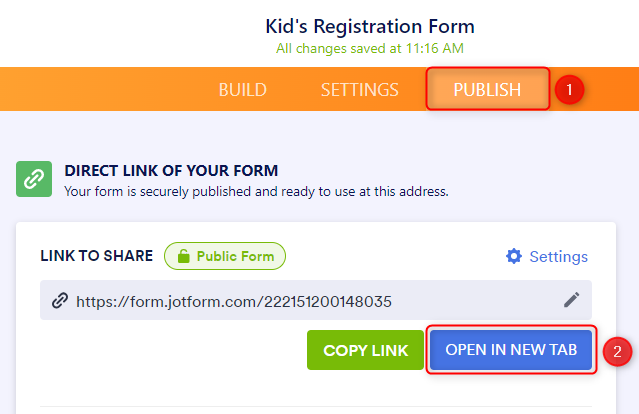
Fill in your details, and click on ‘Submit’.
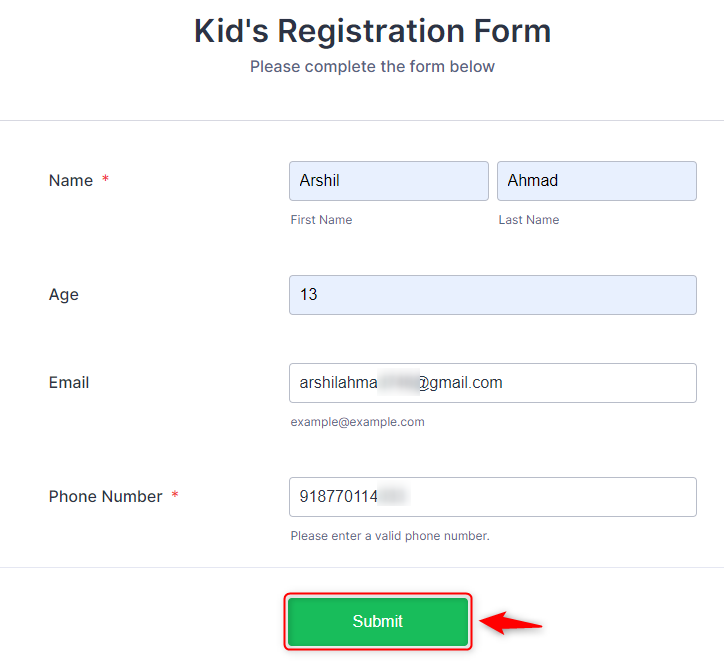
Switch to Pabbly Connect, and you will find the received response. Pabbly Connect has fetched the details of your submitted form, thus confirming the connection.
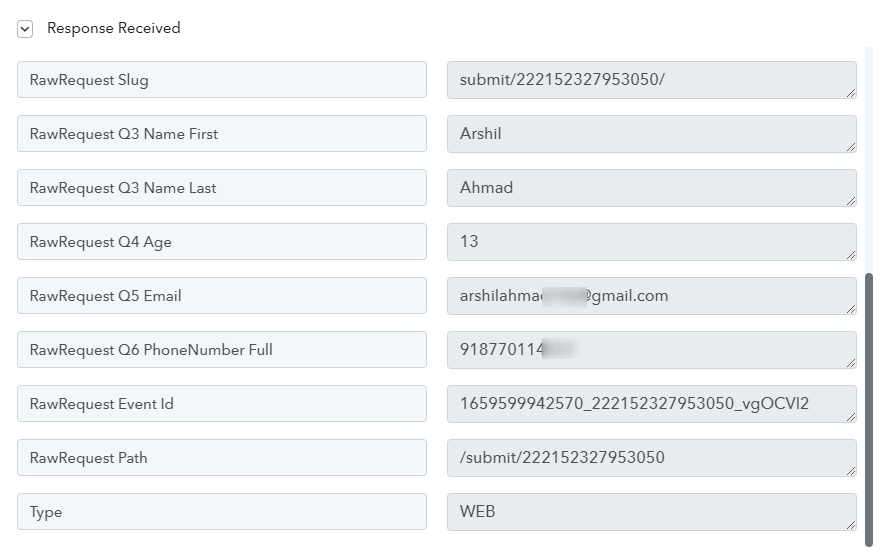
Our next step will be to link WhatsApp Business Cloud API with Pabbly Connect. This will help us send template messages directly on WhatsApp whenever a new JotForm is submitted.
Note: Setup your WhatsApp Business Cloud API by following Step 1 to Step 3 of this post.
Step 3:- Setup WhatsApp Business Cloud API as Action App
A. Action App
Action allows us to choose the application that will get executed by the workflow trigger.
We essentially want to send template messages on WhatsApp. Therefore, WhatsApp Cloud API will be our action app.
Choose ‘WhatsApp Cloud API’ as your app, select ‘Send Template Message’ as your Action Event, and click on ‘Connect’
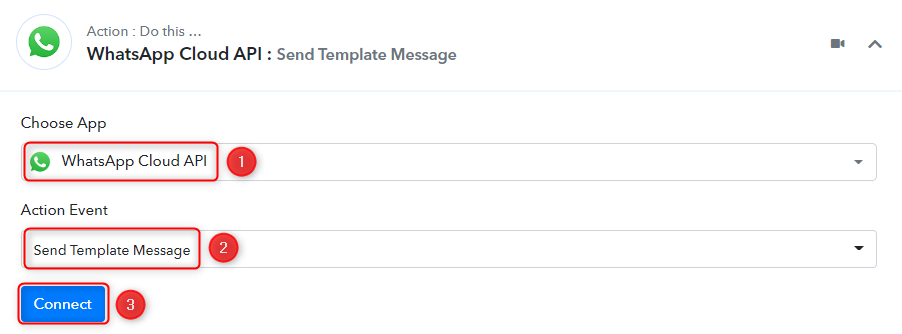
B. Connect with WhatsApp Cloud API account
To connect with your WhatsApp Cloud API account, select ‘Add New Connection’.
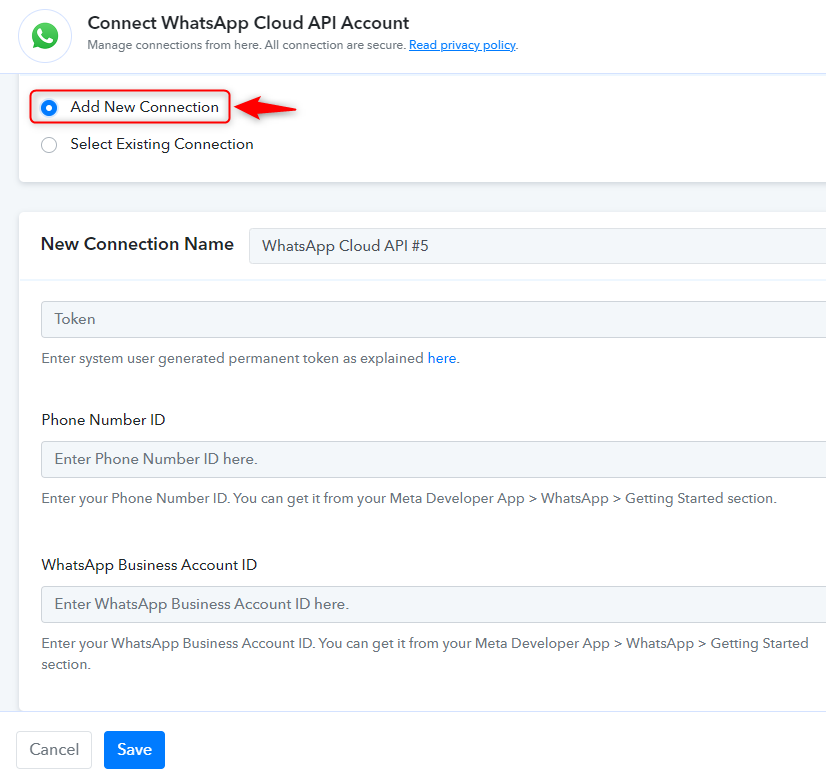
Switch to your WhatsApp Business Cloud API account to find the Phone Number ID and WhatsApp Business Account ID. Copy both IDs
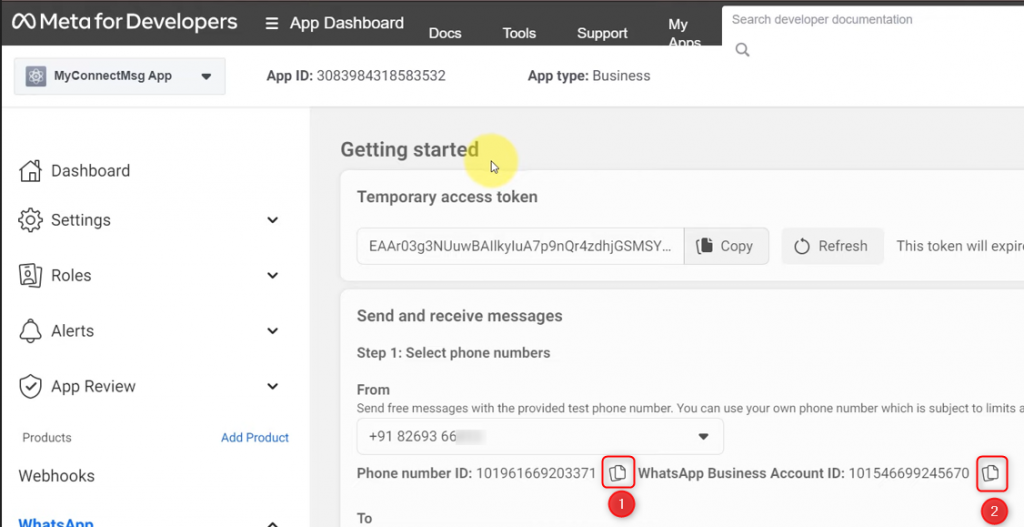
Paste the IDs in their respective fields
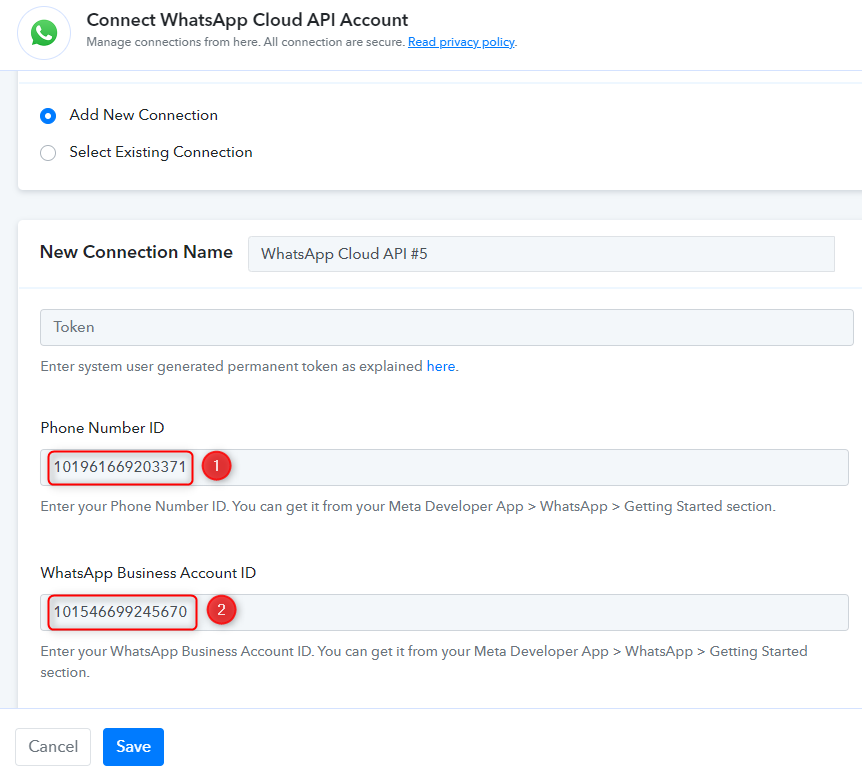
The Token visible on your dashboard is a temporary one that expires every 24 hours. For our workflow, we need a Permanent Token. You can generate a Permanent Access Token by following the steps given in this post.
Paste the Permanent Token, and click on ‘Save’
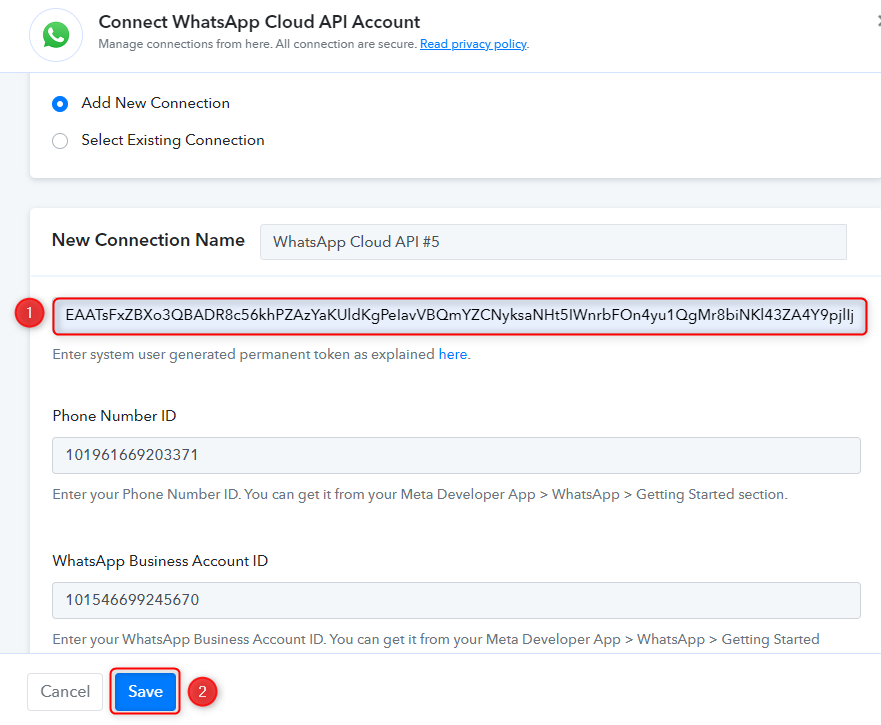
Your WhatsApp Business Cloud API account is now connected.
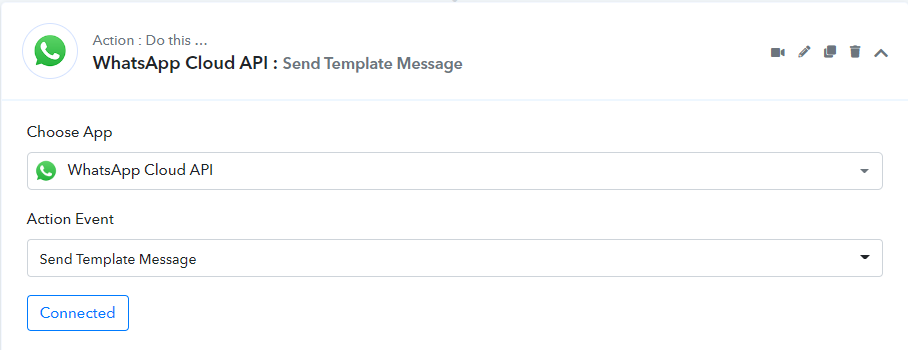
Step 4:- Create a Message Template
You will be asked to fill up a few fields. You can either select your Template Name directly from the list if you already have one ready or create a new message template by following these steps.
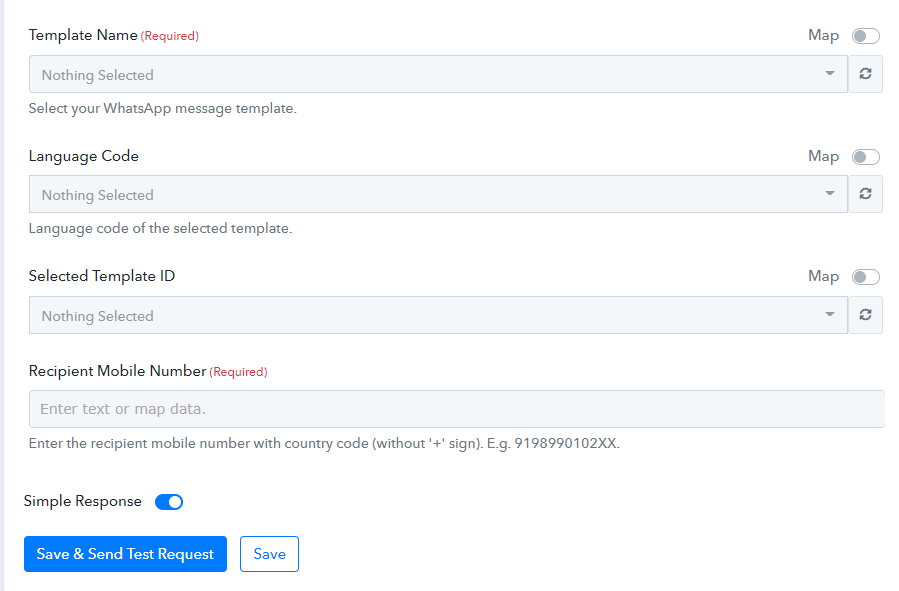
A. Create Message Template
Switch to your WhatsApp Cloud API dashboard, and click the ‘here’ hyperlink. You will be redirected to a new page.
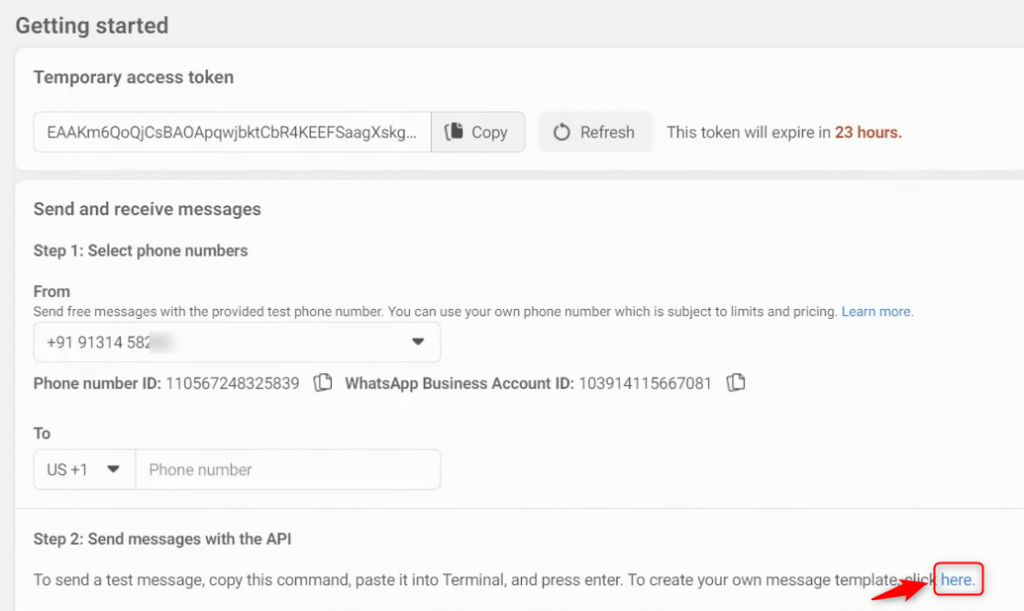
Click on ‘Create Message Template’.

Select a Category, Name the template and pick a Language. Click on ‘Continue’
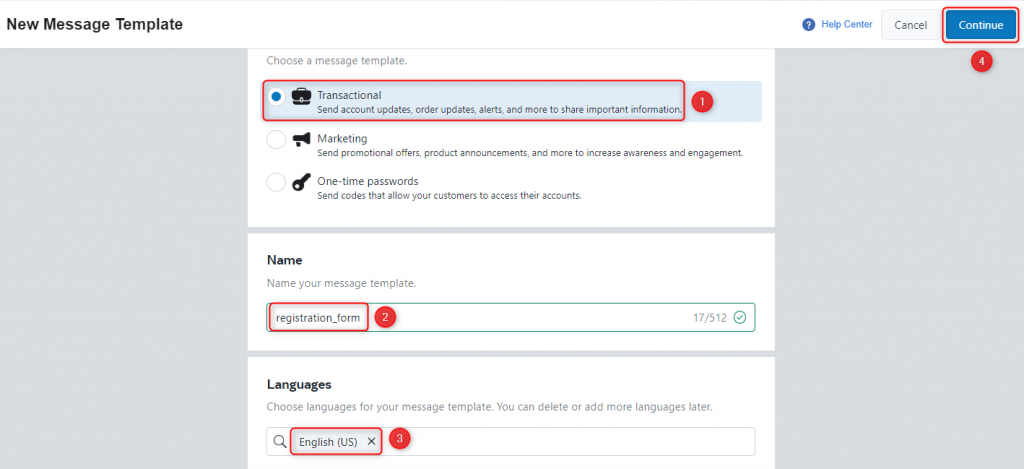
B. Body with Dynamic Data Tags
Type in your message in the Body field. To personalize your message, include Dynamic Data Tags in your template.
Dynamic Data Tags help us to include variables in our template, these variables will be replaced with actual data in your message. The actual data can be a name, an email address, date, time, ID number etc. To add a dynamic tag to your template, write your variables between double curly braces {{variable}}.
We have also included dynamic data tags {{variable}} in our document. In our case, they will be replaced with actual data like the name of the respondent and team name. You can use the dynamic tags per your choice of the variable.
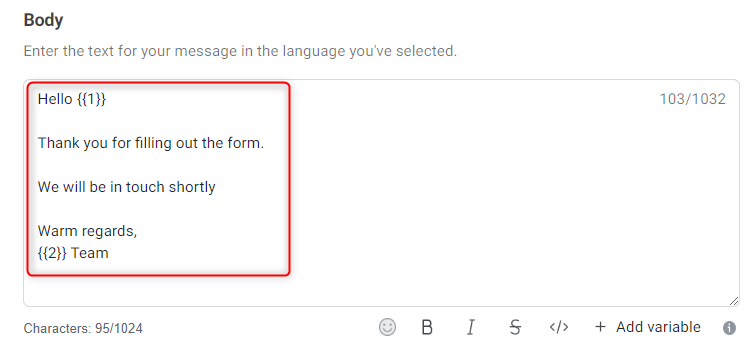
C. Add Sample Content
To create a new template message, we are required to send Facebook a sample template for verification.
To send a sample, Click on ‘Add Sample’.
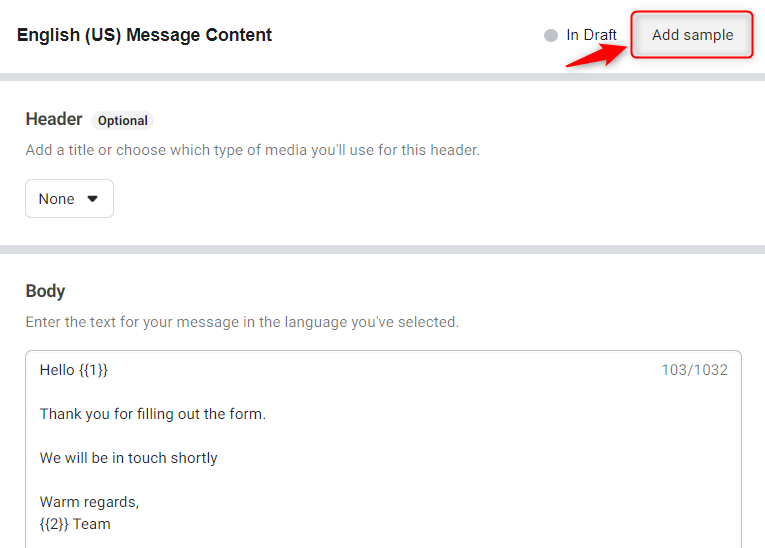
Enter the data you want your tags to be replaced with, and click on ‘Done’.
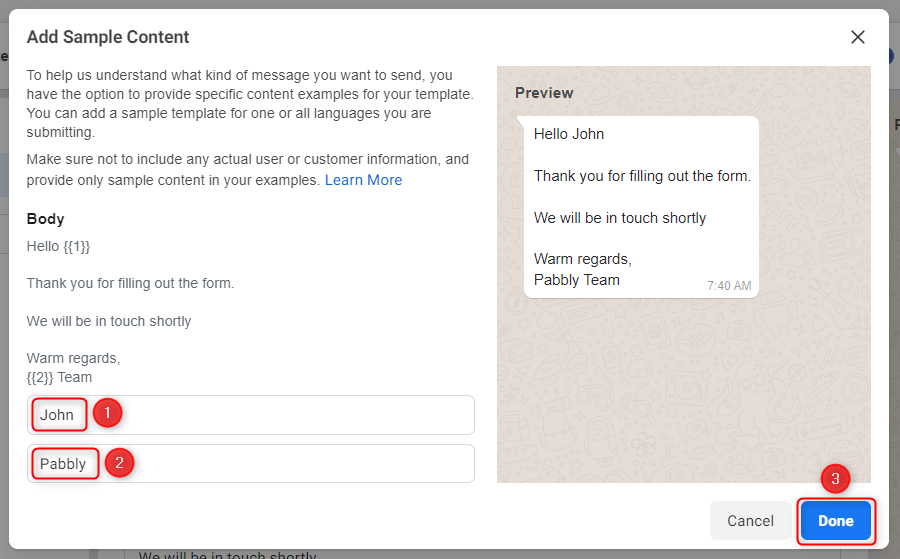
‘Submit’ your message and ‘Confirm’

As you submit your template, it could be approved right away or go to Facebook for a manual review. This process may take anywhere from a few minutes to a few hours. Reload your page to see if your template is approved and available, as indicated by the green dot. Your template is ready for use.

Select your Template Name
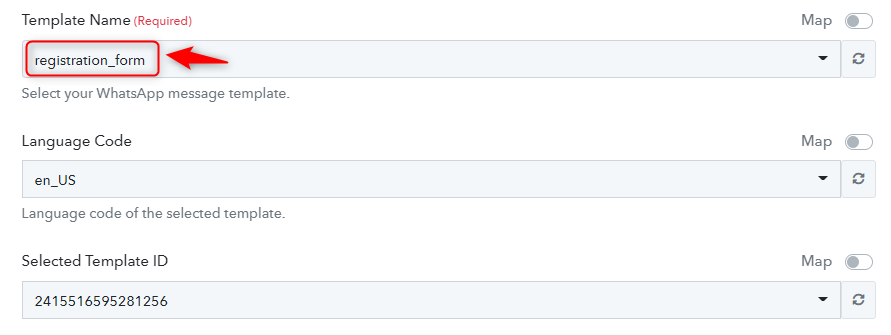
Reauthorize your connection by clicking on ‘Connected’.
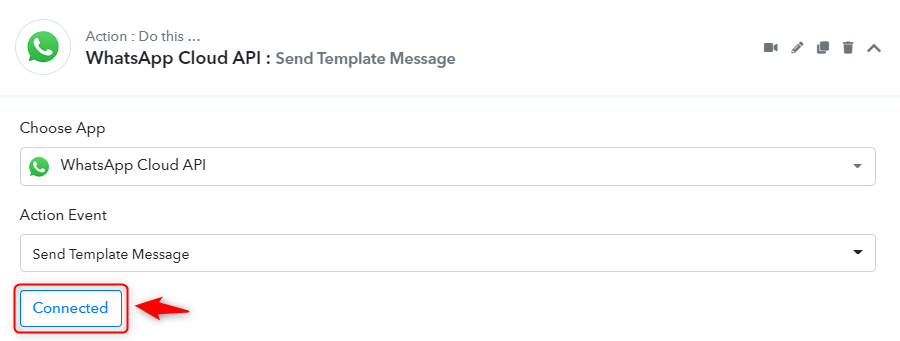
Click on ‘Save’, and your connection will get reauthorized.
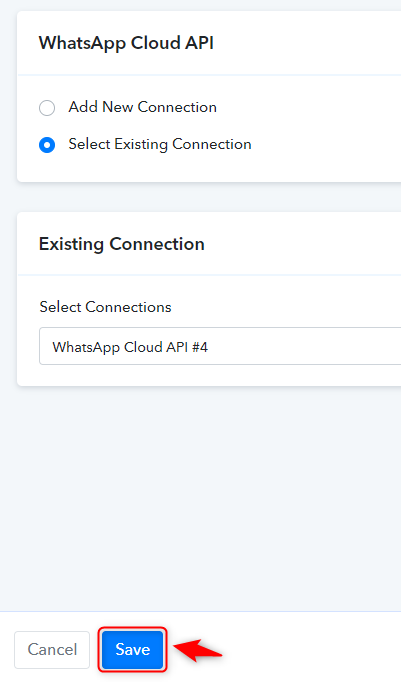
Step 5:- Map the Recipient Mobile Number and Body Fields
Map the Recipient Mobile Number from the step above
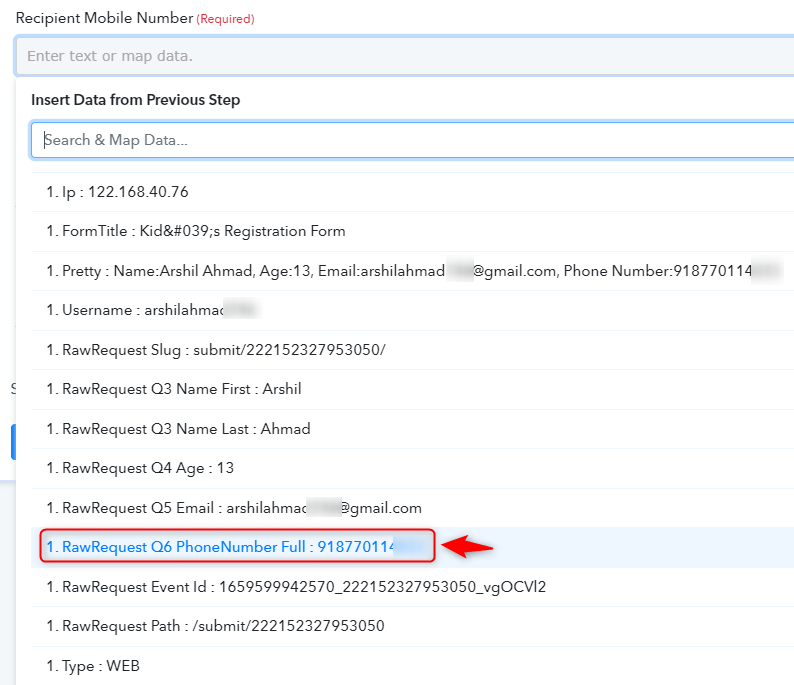
Remember the Dynamic Data Tags we talked about? Those tags will be replaced by the data present in Body Fields.
Map the Body Fields from above. They could vary as per your choice of the variable. Click on ‘Save & Send Test Request’.
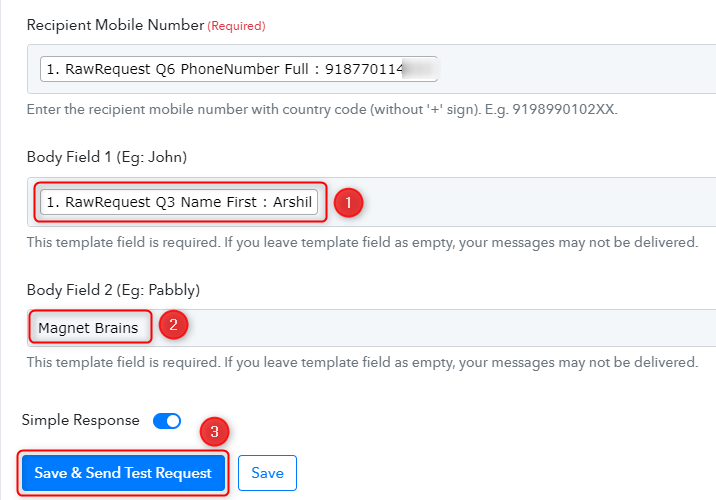
We have received the template message on WhatsApp, and our automation is now complete.
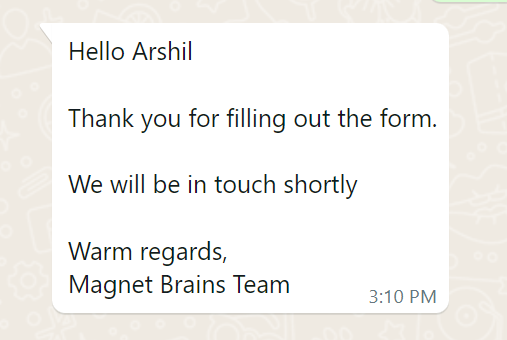
We have successfully integrated JotForms with WhatsApp Business Cloud API. As soon as a user responds to your JotForm, the respondent will receive a personalized message on WhatsApp.
The link below provides a copy of the workflow to familiarize you with the steps:
https://connect.pabbly.com/workflow/share/WhJVZ1UeBi4ETgdDAUYGZVtMBSwJQ1EHAWZTQQ
Sign Up for a free Pabbly Connect account, and start automating your business.
Subscribe to our Youtube Channel for more such automation.
For any other queries, visit our forum